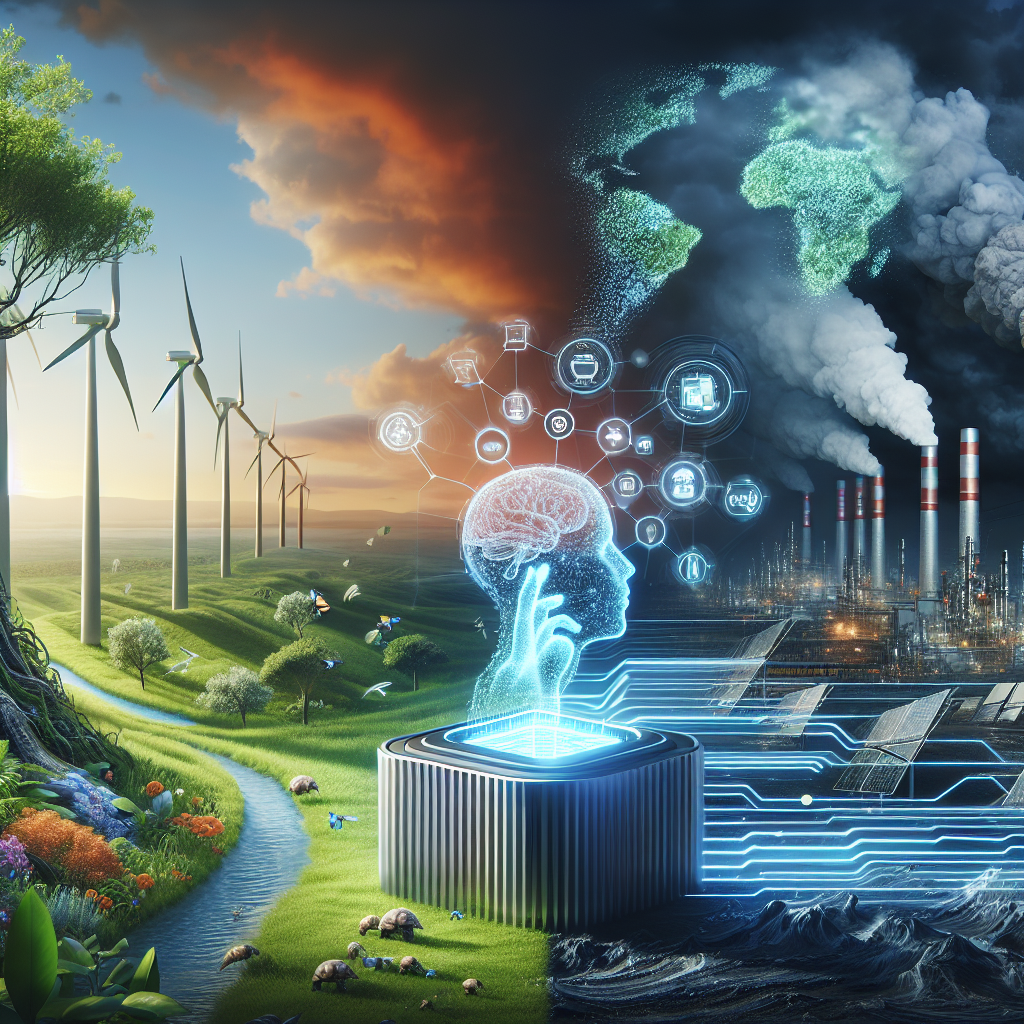Climate change is one of the biggest challenges facing our planet today. From rising global temperatures to extreme weather events, the impacts of climate change are becoming more apparent and urgent. As we work to address this crisis, it is essential to explore how artificial intelligence (AI) can be used to both mitigate the risks of climate change and find innovative solutions to help us adapt to a rapidly changing environment.
AI and Climate Change: Risks
One of the key risks associated with using AI to address climate change is the potential for unintended consequences. As AI systems become more advanced, there is a risk that they may make decisions that have negative impacts on the environment. For example, if an AI system is programmed to maximize energy efficiency, it may prioritize short-term gains over long-term sustainability, leading to increased carbon emissions or other environmental problems.
Another risk is the potential for AI systems to perpetuate existing biases and inequalities. If AI systems are trained on biased data or designed without considering the needs of marginalized communities, they may exacerbate social and environmental injustices. For example, if an AI system is used to allocate resources for climate adaptation projects, it may prioritize wealthy or politically connected communities over those that are most vulnerable to the impacts of climate change.
AI and Climate Change: Solutions
Despite these risks, AI also has the potential to be a powerful tool for addressing climate change. AI can be used to analyze vast amounts of data to better understand the complex and interconnected factors driving climate change. This data can help policymakers and scientists make more informed decisions about how to reduce emissions, adapt to changing conditions, and protect vulnerable communities.
AI can also help optimize energy systems, transportation networks, and other infrastructure to reduce emissions and improve efficiency. For example, AI can be used to optimize the operation of renewable energy sources like solar and wind power, predict energy demand to better manage grid systems, and improve the efficiency of transportation networks to reduce emissions from cars and trucks.
AI can also help improve climate resilience by predicting and responding to extreme weather events, such as hurricanes, floods, and wildfires. By analyzing historical data and using advanced modeling techniques, AI can help communities better prepare for and respond to these disasters, saving lives and reducing the economic and social impacts of climate change.
In addition, AI can help monitor and enforce environmental regulations by analyzing satellite imagery, sensor data, and other sources of information to detect and prevent illegal activities, such as deforestation, poaching, and pollution. By improving our ability to monitor and enforce environmental laws, AI can help protect ecosystems and biodiversity, reducing the impact of climate change on vulnerable species and habitats.
FAQs
Q: How can AI help reduce emissions from transportation?
A: AI can be used to optimize transportation networks, improve traffic flow, and promote the use of electric vehicles and other low-emission modes of transportation. By analyzing data on traffic patterns, energy consumption, and emissions, AI can help policymakers and urban planners make more informed decisions about how to reduce emissions from cars, trucks, and other vehicles.
Q: Can AI help predict and prevent extreme weather events?
A: Yes, AI can be used to analyze historical weather data, satellite imagery, and other sources of information to predict extreme weather events, such as hurricanes, floods, and wildfires. By providing early warnings and helping communities better prepare for these disasters, AI can help save lives and reduce the economic and social impacts of climate change.
Q: How can AI help protect vulnerable communities from the impacts of climate change?
A: AI can be used to analyze data on social vulnerabilities, such as poverty, access to healthcare, and exposure to environmental hazards, to identify communities that are most at risk from the impacts of climate change. By targeting resources and interventions to these communities, AI can help ensure that all people have the support and resources they need to adapt to a changing climate.
In conclusion, AI has the potential to be a powerful tool for addressing climate change, but it also comes with risks that must be carefully managed. By using AI to analyze data, optimize systems, and improve resilience, we can better understand the impacts of climate change and find innovative solutions to protect our planet and all its inhabitants. With careful planning and responsible use, AI can help us build a more sustainable and resilient future for generations to come.

